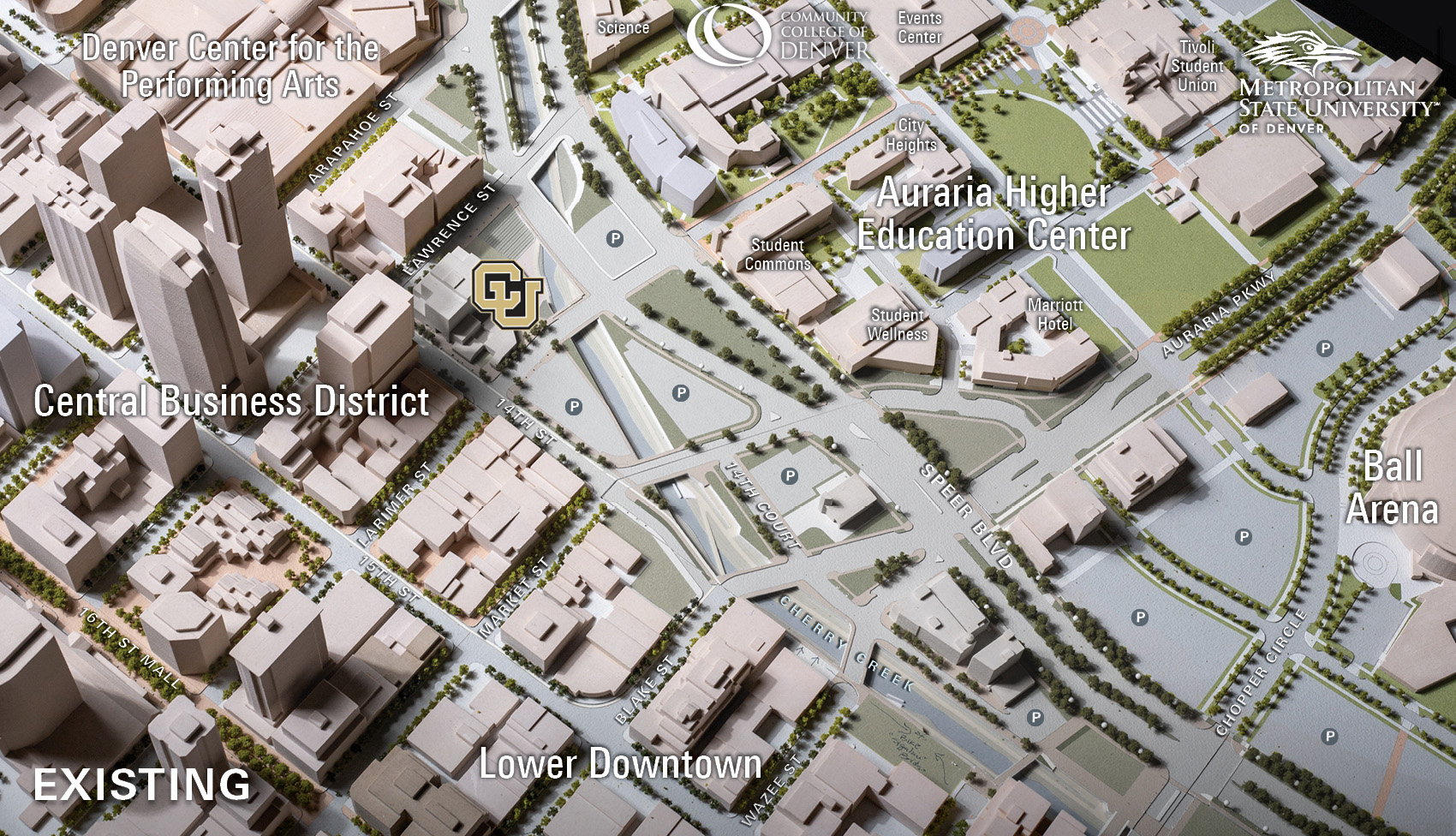A bold new idea is emerging that offers Denver the opportunity to generate new, long-term revenue streams and proactively addresses our housing shortage and growing downtown vacancy rates. It may not seem obvious at first, but a key to vibrant, economically resilient cities is to fully leverage one of our most valuable assets, publicly owned land. Fully leveraging the inherent value embodied in our publicly owned real estate and infrastructure, we can continue Denver's successful legacy of connecting people, institutions, culture, and businesses, creating new civic and economic value.
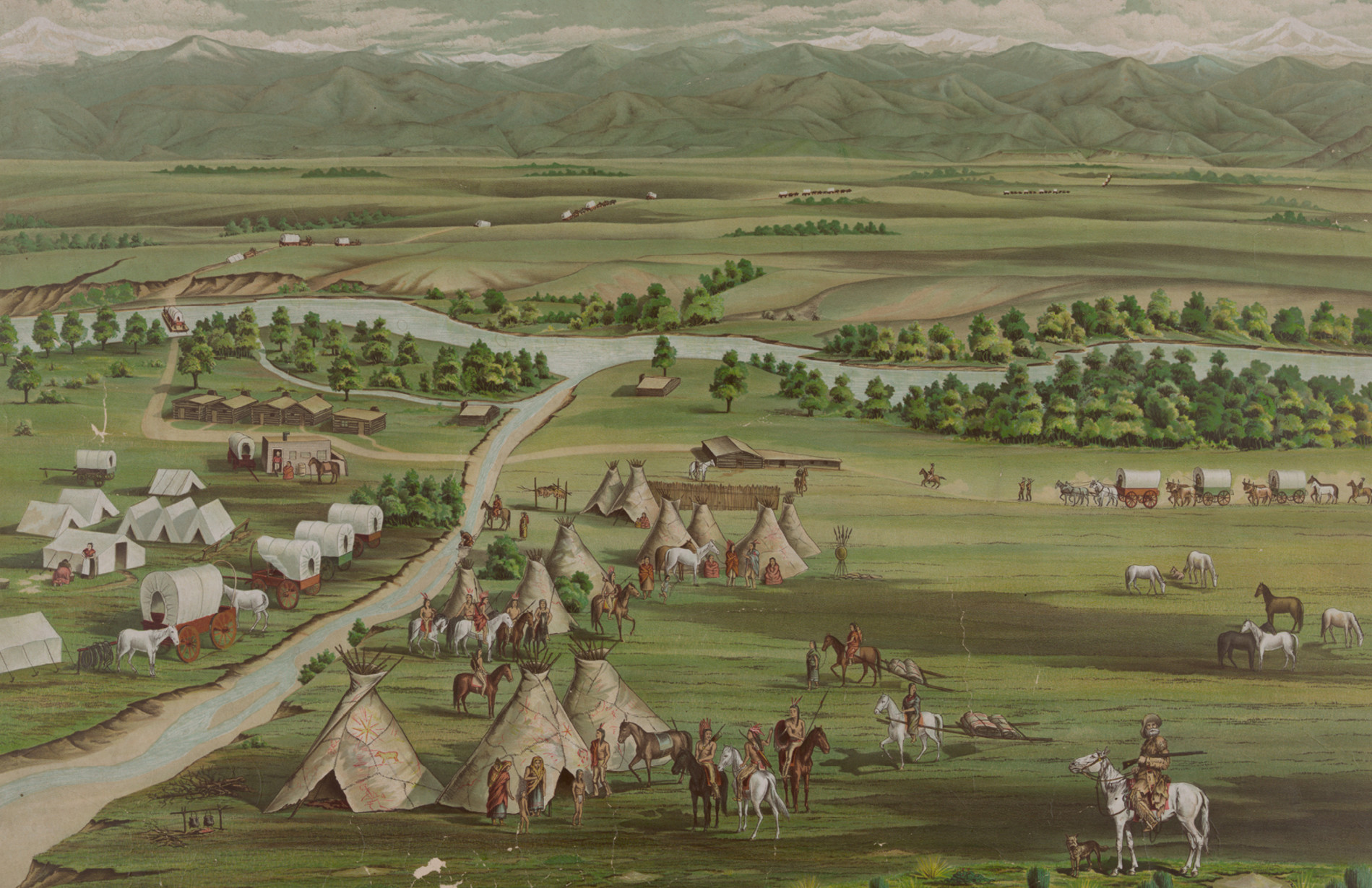
People have always been drawn to the water. The Cheyenne and Arapaho tribes and 1859 Gold Rush settlers alike chose to establish their camps at the confluence of Cherry Creek and the South Platte River. Denver's founders platted public and private lands at the confluence, laying the groundwork for the city's growth and development.
Throughout the 19th Century, as Denver continued to expand, the citizens of Denver invested heavily in public infrastructure linking commercial, industrial and residential areas near the confluence in Lower Downtown, and across Cherry Creek to Auraria. During the early part of the 20th century, Denver became a model for “City Beautiful” infrastructure through public investment in our remarkable system of boulevards, parks and parkways that humanized our growing industrial city.
Over the past 50 years, Cherry Creek and the South Platte River have continued to define downtown's growth and development. In the 1990s and 2000s, consolidation of rail lines initiated the transformation of the disconnected industrial area into what we now experience as Denver's vibrant Central Platte Valley. Through the visionary leadership of Mayors Peña, Webb and Hickenlooper, the city purchased warehouses and large tracts of industrial land along the Platte and transformed them into parks. Meanwhile, new housing and innovative commercial options and entertainment amenities took advantage of adjacency to the South Platte. The combined impact of the public investments to transform the Central Platte Valley resulted in the continuing surge of private investment, further connecting Denver's urban core to the re-emerging historic neighborhoods across the river.


Now, Denver has the opportunity to re-apply a similar visionary approach to another underutilized waterway, re-imagining the publicly-owned land that currently bounds and separates the Auraria Higher Education Campus from Cherry Creek and downtown. After 50 years of neglect, reconnecting Auraria with the redeveloped waterfront offers students, faculty and downtown businesses a remarkable new opportunity for connected urban living and would catalyze CU Denver's "Innovation District."
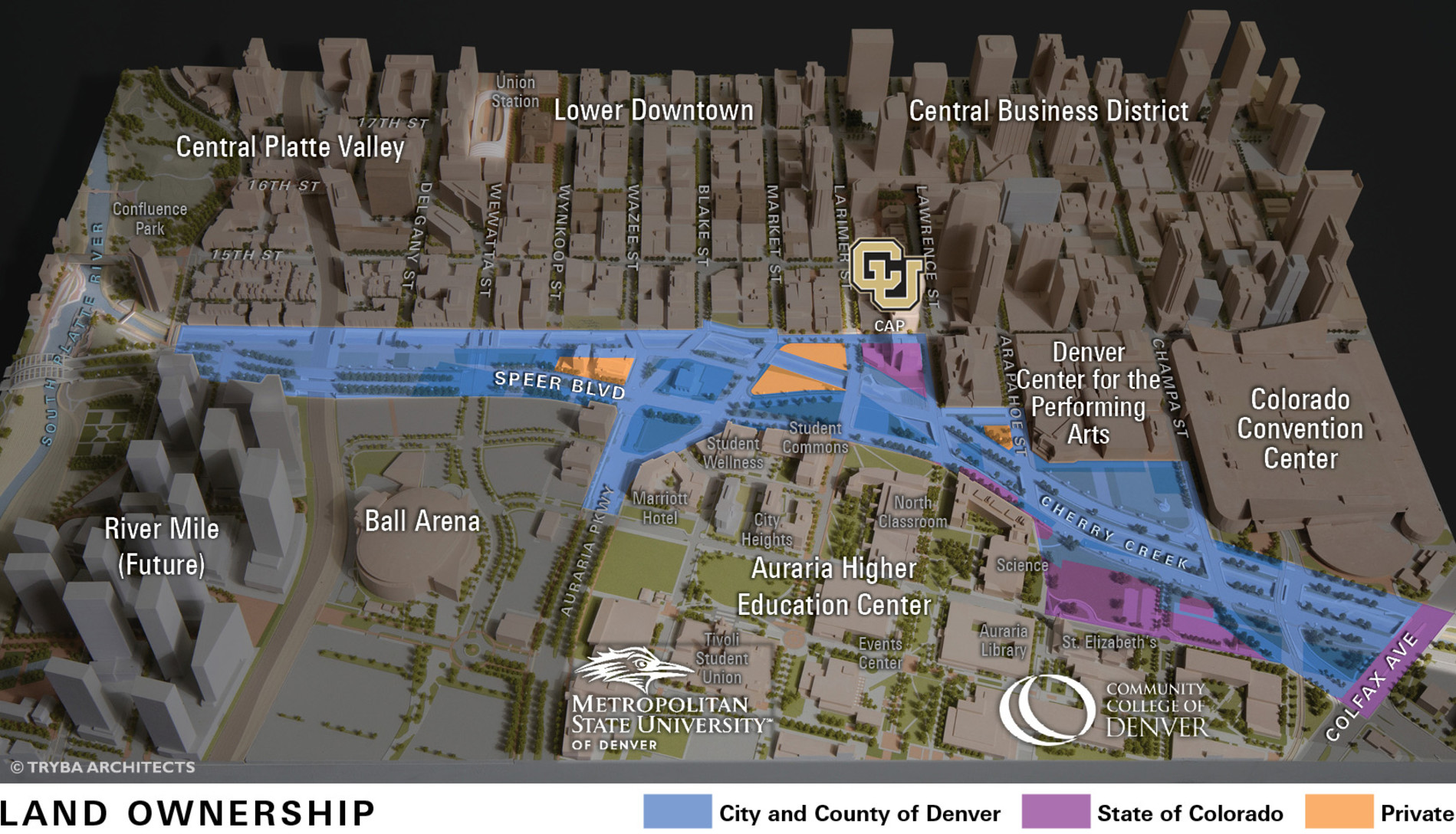
94% of the 20-block area of Speer Boulevard separating the Auraria Campus from the waterfront and downtown illustrated above is publicly-owned real estate. Envisioning a repurposing of this fallow public land and its existing infrastructure has the opportunity to unlock a vital and long-term source of civic capital. New revenue from public lands enhances Denver's ability to remain economically competitive, and reduce social and new infrastructure challenges without the need to raise taxes.
Auraria's adjacency to the Cherry Creek greenway and downtown offers tremendous opportunity to engage in strategic public-private partnerships to attain a fully-connected urban innovation campus with quality design that attracts students and outside financial investors. Urban innovation campuses across the country, including Texas A&M Fort Worth, Arizona State University in Tempe, and Philadelphia's multi-institution Innovation District have leveraged remarkably successful public-private partnerships that have accelerated development of urban campuses within each of these downtown cores. In 2022 the University of Colorado Denver surveyed 350 higher education leaders from across the country, finding that 71% were exploring public-private partnerships with the goals of increasing investment capital and enhancing campus infrastructure.
The Colorado Legislature in 2022 created a statewide Public-Private Partnership (P3) Collaboration Unit. As of Spring 2023, additional legislation is under consideration that would further empower the P3 unit to broker real-estate transactions between the State and private developers to encourage development to help offset the state's immense housing shortage, one of the worst in the nation. Likewise, the City of Denver has implemented Executive Order 100A streamlining the leasing of city-owned property to non-city entities. Our state and city leaders acknowledge the cost of land is one of the most significant impediments to the creation of affordable housing. Working in partnership to re-think our publicly-held real estate provides innovative new options for building much-needed new housing in our city centers. Options include long-term ground leases, allowing a private investor to enjoy the rights of ownership in terms of flexibility to improve and build on the site.
The authors of the book The Public Wealth of Cities (2017) describe how leveraging public real estate assets offers "an indispensable tool for creating human and social value: innovation hubs instead of decaying city centers, a healthy mixture of high- and low-cost housing instead of segregated communities, proximity to workplaces [and education] instead of long-haul commutes." The 'public wealth' approach provides a tool for self-financing the social and community improvements that Denver is struggling to attain.

Currently, the bloated design for Speer Boulevard consumes one quarter of the 70-acre district envisioned for improvement. Nearly 600 feet wide in places, with up to eleven lanes of traffic, Speer creates a barrier between downtown and the campus, with awkward and hazardous pedestrian crossings.
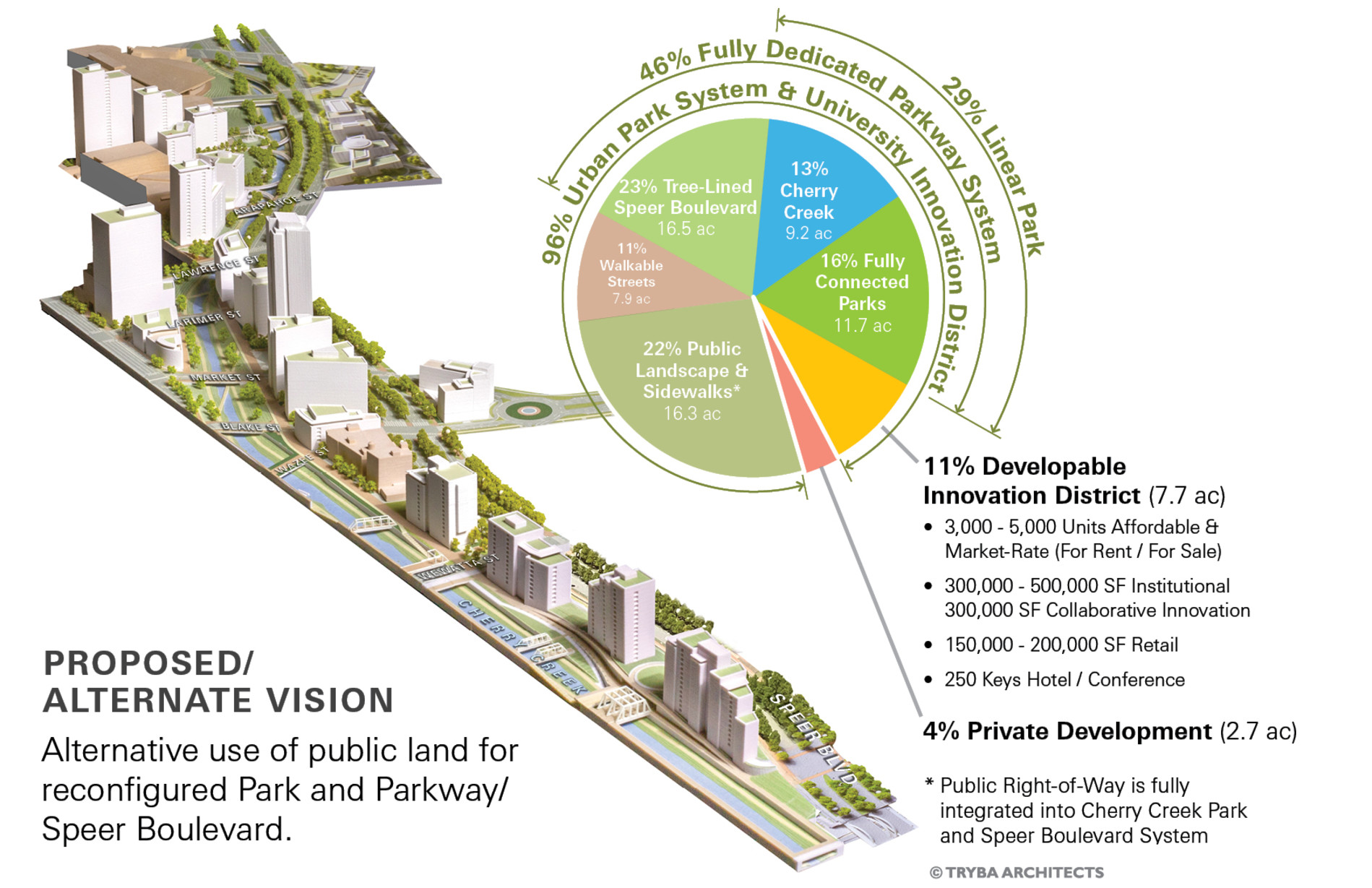
Reconfiguring Speer Boulevard to the south of Cherry Creek would significantly improve the auto, transit and pedestrian experience of the street, create new developable land, and nearly double the existing park space along the creek. Aligning the interests of the City, the State and private development creates opportunities for up to 5,000 affordable and attainable housing units for students, faculty and their business and innovation partners, while physically re-connecting the entire Auraria Campus directly to the natural waterfront of Cherry Creek, and to downtown.
Developing a gradual and varying transition between Speer Boulevard and Cherry Creek allows the use of existing infrastructure, including all bridges, to re-create a natural connection between the Auraria Campus and the water's edge. Refining Speer Boulevard in the legacy of Denver's "City Beautiful" park and parkway system establishes a new, mile-long linear park along Auraria's northeastern perimeter from Colfax to the confluence.
The proposed vision would reduce lane width from 13-14' to 11,' narrowing the boulevard to improve accessibility by maintaining a calm and predictable flow of traffic at consistent and lower speeds. Cross-streets would be converted from one-way to two-way, enhancing Speer Boulevard's ability to accommodate well over the current 50,000 car trips per day.
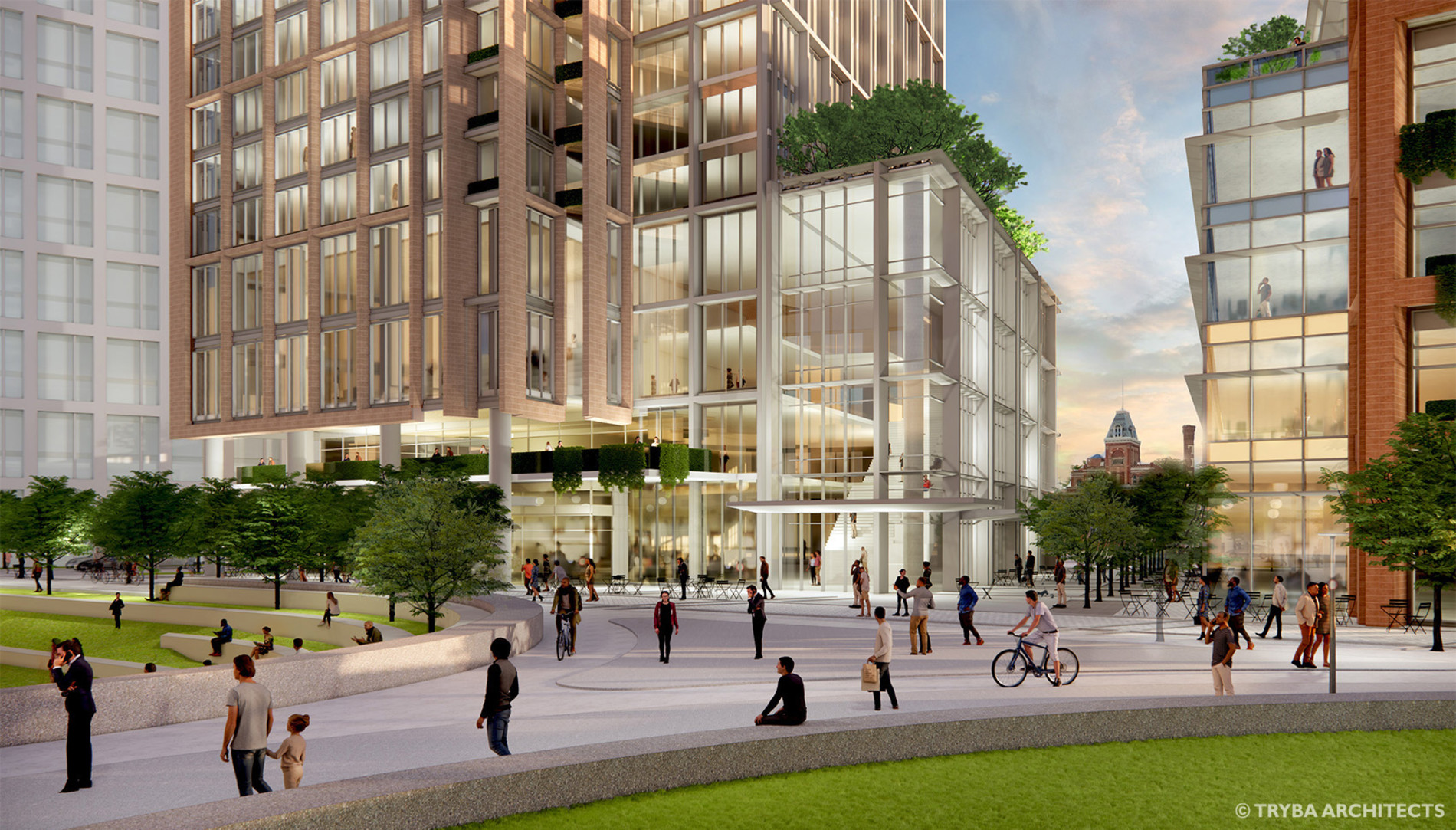
The realignment of Speer Boulevard further creates new connectivity between downtown and the growing sports and entertainment district surrounding Ball Arena and in the planned River Mile District. What is today an isolated entertainment venue surrounded by surface parking is envisioned to become part of a vibrant, activated mixed-use urban environment.
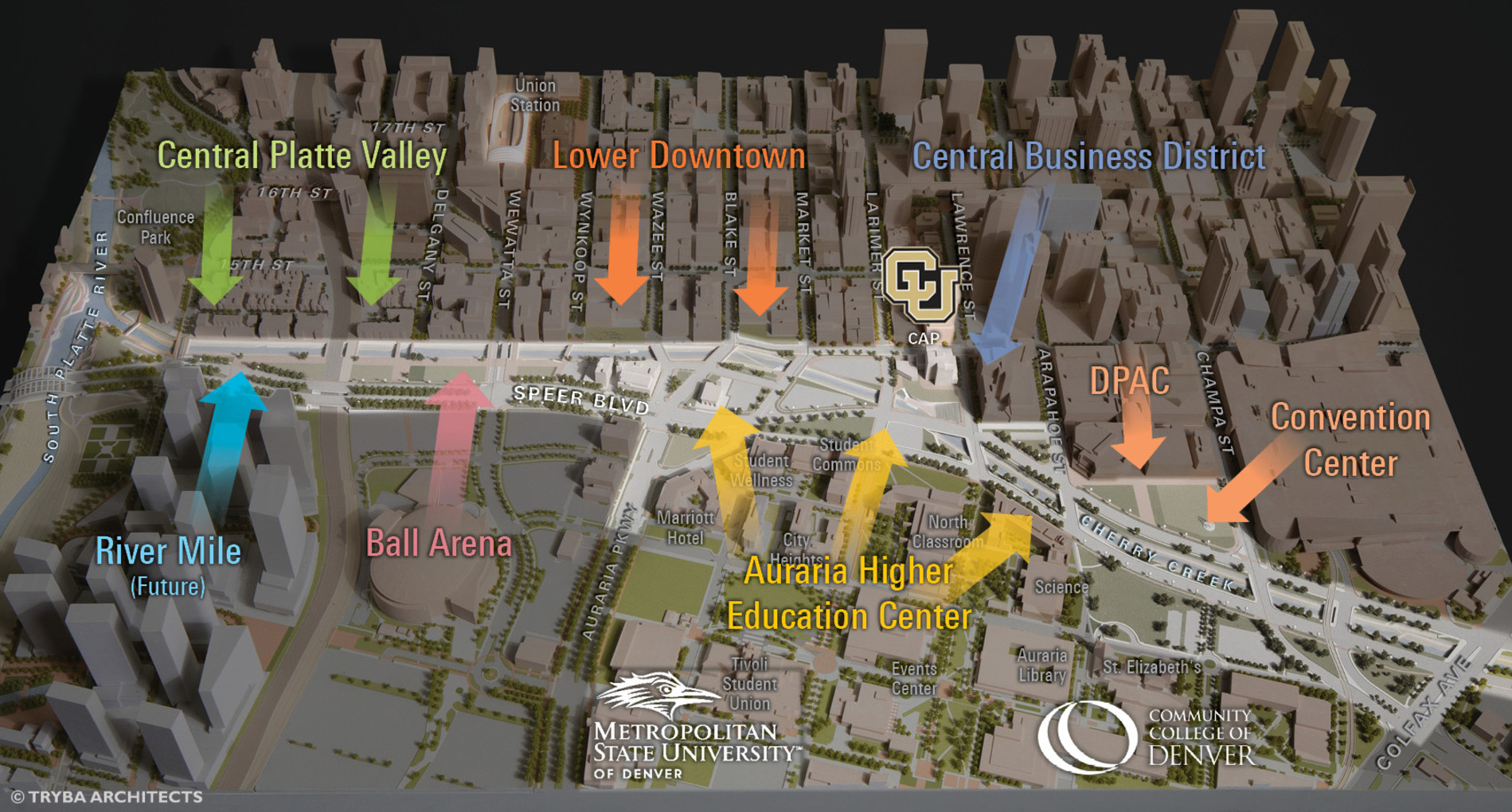
East of the creek, the arts and cultural district's public assets will also be remarkably enhanced by the proposed plan. Currently the Performing Arts Complex and Convention Center back up to Speer while the public lands along the creek are disconnected and ripe for meaningful activation. Reconfiguration of Speer unlocks developable land for a potential new 1,000-room Convention Center hotel, housing, and the creation of another unmistakably memorable outdoor amphitheater for Denver, directly connected to the Cherry Creek waterfront park.

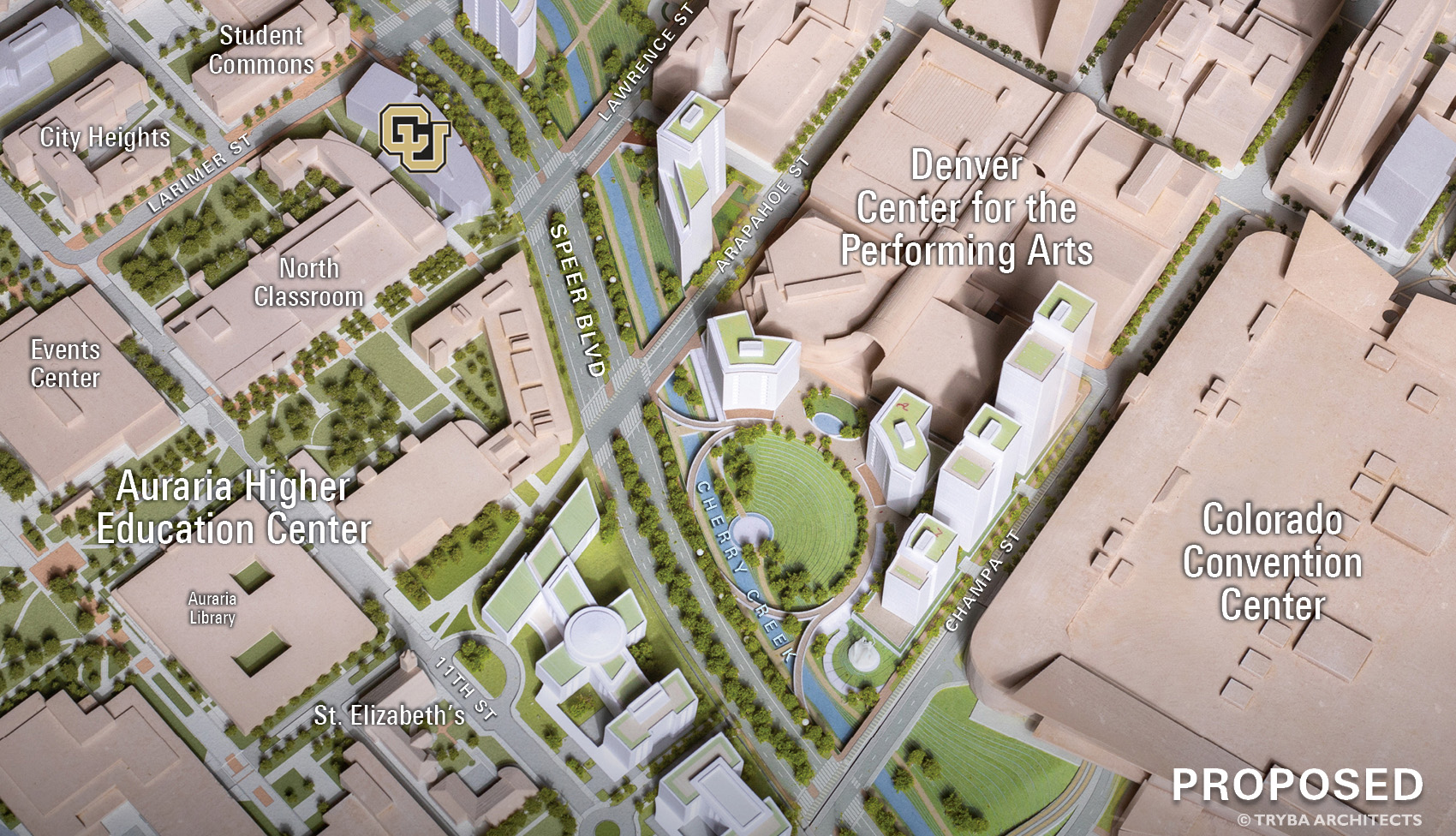
Denver's history has proven that boldly investing in our public infrastructure is key to our city’s success. During the past decade, we as a community have faltered in our previous commitment to creating and maintaining our quality public realm. Now is the time to re-establish the trajectory of earlier accomplishments toward imagining—and building—our great city. Effective stewardship of our publicly-held real estate can greatly enhance our ability to build our community, our wellbeing, our connectivity with nature—and with each other.
